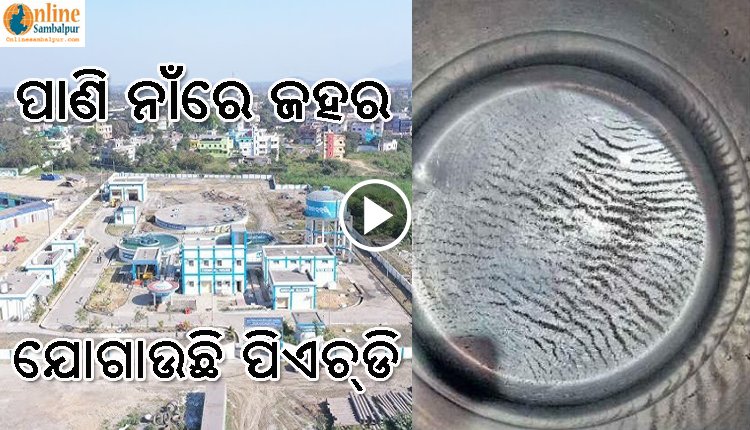Sambalpur: PHED Supplying Poison in the Name of Water, Who Benefits from Crores Spent on Purification?

Sambalpur: Sambalpur residents have long complained about the poor quality of drinking water provided by the Public Health Engineering Department. Year after year, PHED has been accused of delivering toxic water to the city’s households. Despite the use of expensive Aquaguard filters and other filtration methods, people continue to get dirty water from their taps. This problem has persisted without resolution for the past decade, culminating in a major jaundice outbreak in the city just a few months ago. The health crisis was blamed on contaminated water, leaving residents frustrated by the lack of significant corrective action.
Unresolved Water Contamination Despite Government Spending
While the Odisha state government spends crores of rupees per year on water purification projects, there are suspicions of irregularities. These concerns have led many people to question the effectiveness of these investments. Despite repeated promises, clean drinking water remains a pipe dream for Sambalpur residents. Large government hoardings claim that authorities supply pure water, but even the best water filters cannot completely clean the muddy water coming from the taps. This problem occurs not only in remote areas but also in the heart of Sambalpur, where people must endure murky water.
Online Sambalpur Is Now On WhatsApp!
Join us for the latest news updates delivered directly to your WhatsApp.
Subscribe Us On YouTube!
Join us for the latest news updates and video content delivered directly to you.
Years of Neglect Lead to Widespread Discontent
Residents have raised their voices year after year, but the situation has not changed significantly. Despite the city’s transition from a municipal council to a municipal corporation, basic services such as clean drinking water remain out of reach. The PHED’s water supply remains inadequate in many parts of the city, and even when it is provided, it is frequently unreliable. Citizens are forced to drink unfiltered, contaminated water for the majority of the year, particularly during the monsoon season, when the situation worsens.
Mud-Laden Water Persists During Monsoon
During the rainy season, the supplied water becomes brown and muddy. Residents report finding a thick layer of sediment at the bottom of their containers. Even after they boil the water, fears persist because dirt remains at the bottom. Furthermore, advanced filtration systems such as Aquaguards are ineffective, leaving residents with few options. Wealthier families can afford bottled mineral water, but the poor do not have any alternatives. Despite growing dissatisfaction, PHED officials continue to act with impunity, exacerbating the situation.
Jaundice Epidemic of 2024 Linked to Water Contamination
In 2024, Sambalpur experienced a widespread jaundice epidemic as a result of PHED-contaminated water. Many lives were lost during this period. Even ten years after this incident, another jaundice outbreak occurred three months ago. Although officials have claimed to focus on water purification since then, residents believe the same negligence persists. Instead of addressing the root cause, the authorities appear to be spending crores on contracts and tenders, raising the possibility of financial mismanagement.
Questions Raised About the Misuse of Funds
With crores of rupees spent on purification, many are questioning who truly benefits from these funds. The residents are clearly not. As the consequences of unsafe water continue to worsen, the public is demanding transparency and accountability. With no effective solutions in sight, Sambalpur residents are becoming increasingly frustrated, wondering when they will finally be able to drink clean water.






